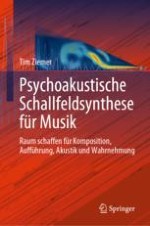2023 | OriginalPaper | Buchkapitel
2. Räumliche Konzepte der Musik
verfasst von : Tim Ziemer
Erschienen in: Psychoakustische Schallfeldsynthese für Musik
Aktivieren Sie unsere intelligente Suche, um passende Fachinhalte oder Patente zu finden.
Wählen Sie Textabschnitte aus um mit Künstlicher Intelligenz passenden Patente zu finden. powered by
Markieren Sie Textabschnitte, um KI-gestützt weitere passende Inhalte zu finden. powered by
